The Environmental Consequences of Oil Spills
Oil spills are not just unfortunate accidents; they are catastrophic events that can have a profound and lasting impact on our planet. When oil leaks into oceans, rivers, or even on land, it creates a ripple effect that touches every aspect of the ecosystem. Imagine a beautiful beach, bustling with life, suddenly turned into a slick, toxic wasteland. The immediate aftermath is alarming, but the long-term consequences can be even more devastating. This article delves into the environmental repercussions of oil spills, examining their effects on wildlife, ecosystems, and human health, while also highlighting the critical need for effective prevention and response strategies.
When an oil spill occurs, the immediate ecological impact is nothing short of catastrophic. Oil spreads quickly, coating everything in its path—from the surface of the water to the shorelines and even the delicate ecosystems that thrive there. Marine and terrestrial organisms are often caught in the crossfire. For instance, fish and other marine life are exposed to toxic compounds that can disrupt their reproductive systems, leading to population declines. On land, plants and animals suffer from oil contamination, which can lead to habitat destruction and food shortages. The sheer volume of oil released can smother habitats, making it difficult for species to survive. This rapid devastation can be likened to a wildfire that destroys a forest in mere hours, leaving behind a barren landscape.
While the immediate effects of oil spills are alarming, the long-term environmental consequences can be even more daunting. Ecosystems often struggle to recover from the initial shock, and the lingering effects of oil can last for decades. For example, certain types of oil can persist in the environment, slowly releasing toxins that continue to harm wildlife and plants. Over time, this can lead to a shift in species composition, with some species declining while others may thrive in the altered environment. The recovery process can be painstakingly slow, much like a once-thriving garden that takes years to restore after being neglected.
Marine organisms, from the tiniest plankton to majestic whales, face significant threats from oil spills. The impact on these creatures can be severe and multifaceted. For instance, oil can disrupt the food chain, affecting everything from phytoplankton to large predators. Furthermore, many marine species experience reproductive issues due to exposure to toxic compounds found in oil. The effects are not just immediate; they can ripple through generations, leading to population declines that can alter the balance of entire ecosystems.
Bird species are particularly vulnerable to oil spills. When birds come into contact with oil, it can impair their ability to fly and thermoregulate, which is essential for their survival. The oil clogs their feathers, reducing their insulation and waterproofing abilities. This can lead to hypothermia and, ultimately, death. Additionally, contaminated birds may ingest toxic substances while preening, further jeopardizing their health. The loss of avian populations can disrupt entire ecosystems, as birds play crucial roles in pest control and seed dispersal.
Coral reefs are among the most biodiverse ecosystems on the planet, but they are also incredibly vulnerable to oil spills. Exposure to oil can lead to coral bleaching, a phenomenon where corals lose their vibrant colors and become more susceptible to disease. This not only affects the corals themselves but also the myriad of species that depend on them for habitat and food. The consequences can be devastating, as the loss of coral reefs can lead to declines in fish populations and disrupt the livelihoods of communities that rely on fishing and tourism.
Oil spills do not just wreak havoc in aquatic environments; they also have dire consequences for terrestrial wildlife. Animals that inhabit the affected areas may suffer from habitat degradation, as oil can contaminate soil and water sources. This leads to food chain disruptions, as the plants and smaller animals that serve as food for larger species become tainted. The impacts can be devastating, often leading to population declines and even extinction in some cases. Picture a once-thriving forest where animals roamed freely, now rendered silent and desolate due to oil contamination.
Beyond the environmental repercussions, oil spills pose significant risks to human health, especially for communities located near affected areas. Exposure to toxic chemicals found in oil can lead to a range of health issues, from respiratory problems to skin irritations. Moreover, the psychological toll on these communities can be immense. The fear of contamination and the loss of livelihoods can lead to increased stress and anxiety, creating a ripple effect that impacts mental health and community cohesion.
The aftermath of an oil spill can leave communities reeling. The emotional and social impacts can be profound, as residents grapple with the loss of their natural environment and the economic challenges that follow. The psychological stress of living in a contaminated area can lead to long-term mental health issues, such as depression and anxiety. Communities may also experience a breakdown in social structures as people struggle to cope with the changes in their environment and livelihoods.
Oil spills have substantial economic ramifications that can devastate local economies. Industries such as fishing and tourism often bear the brunt of the impact. Fishermen may find their catch contaminated, leading to a decline in sales and income. Likewise, tourism can plummet as pristine beaches become polluted. The financial toll can be staggering, with communities facing long-term recovery challenges that can take years or even decades to overcome. Imagine a bustling seaside town that relies on tourism, now struggling to attract visitors due to the aftermath of an oil spill.
- What are the primary causes of oil spills? Oil spills can occur due to tanker accidents, drilling rig blowouts, pipeline leaks, and natural disasters.
- How can we prevent oil spills? Preventative measures include stricter regulations, improved technology, and better training for personnel handling oil.
- What should be done immediately after an oil spill? Quick response is crucial; this includes containment, cleanup, and assessing the environmental impact.
- Are oil spills reversible? Recovery can take years, and some ecological impacts may be permanent, depending on the severity of the spill.
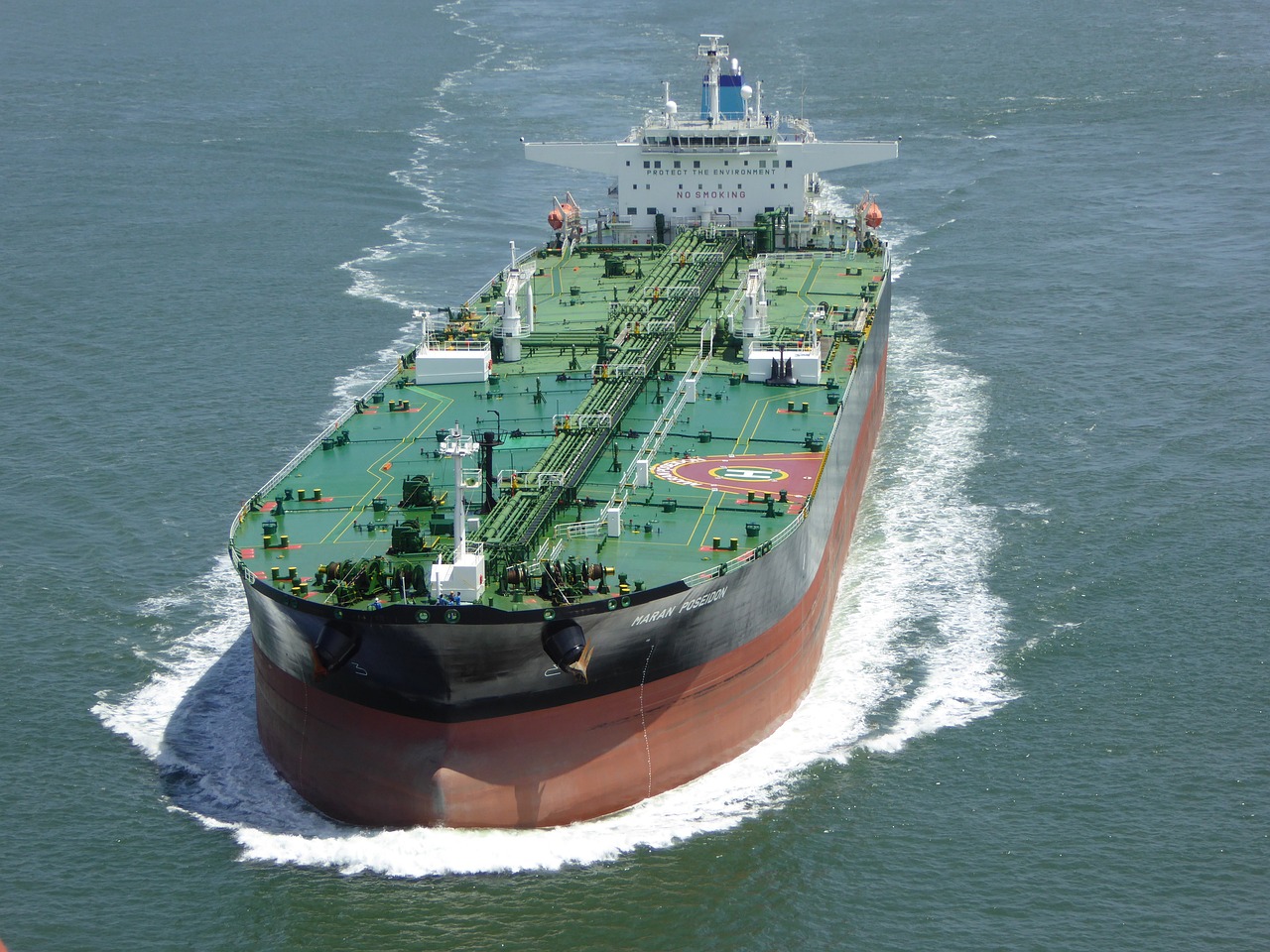
Immediate Ecological Impact
Oil spills are catastrophic events that unleash a torrent of destruction upon our precious ecosystems. The immediate effects are nothing short of devastating, as the thick, black sludge seeps into the very fabric of marine and terrestrial environments. Imagine a vibrant coral reef, teeming with life, suddenly engulfed in a toxic wave. This is the harsh reality faced by countless species when oil spills occur.
The moment oil makes contact with water, it spreads rapidly, forming a slick that can cover vast areas. This slick not only suffocates marine plants but also disrupts the delicate balance of the ecosystem. For instance, phytoplankton, the foundation of the oceanic food chain, can be severely affected. When these tiny organisms struggle to survive, the ripple effect can be felt throughout the entire marine community, leading to a decline in fish populations and, ultimately, impacting human livelihoods that depend on fishing.
Furthermore, the impact on wildlife is profound. Birds, mammals, and fish are often the first casualties of an oil spill. The oil coats their feathers and fur, impairing their ability to regulate body temperature and maintain buoyancy. For instance, seabirds that dive for fish may find themselves unable to fly or swim, leading to starvation. The immediate consequences can be summarized as follows:
- Habitat destruction: Oil spills destroy critical habitats, such as marshlands and beaches, that many species rely on for breeding and feeding.
- Direct mortality: Many animals die from oil exposure, either through ingestion or suffocation.
- Disruption of reproductive cycles: Oil contamination can lead to reproductive issues in various species, further threatening population stability.
Moreover, the chemical components of oil can be lethal. Toxic compounds can accumulate in the tissues of organisms, leading to long-term health issues and increased mortality rates. For example, fish that ingest contaminated prey can experience mutations and developmental abnormalities, which can have cascading effects on their populations.
In conclusion, the immediate ecological impact of oil spills is devastating and far-reaching. The destruction of habitats, the direct harm to wildlife, and the disruption of food chains all contribute to a significant loss of biodiversity. It is crucial that we recognize the gravity of these events and work towards prevention and rapid response strategies to mitigate their impact on our environment.
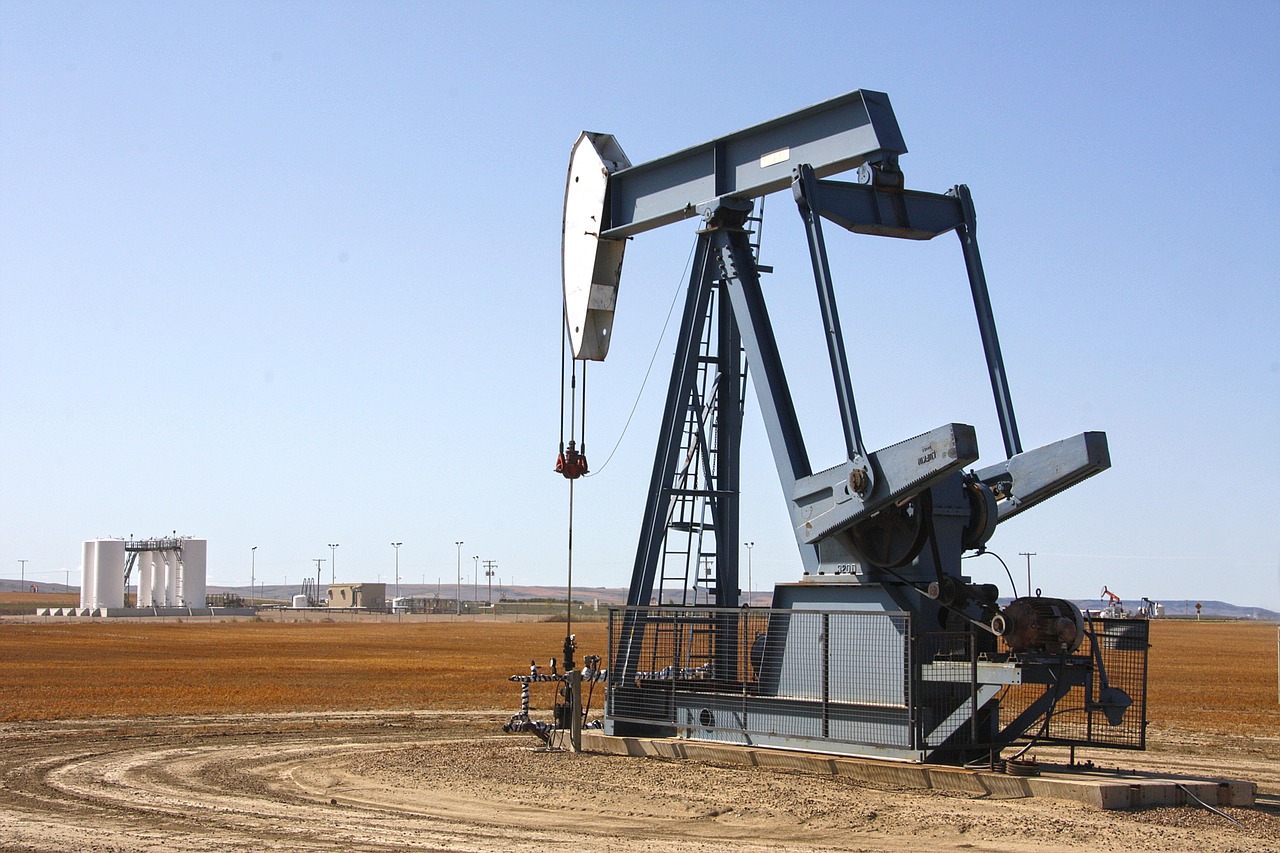
Long-term Environmental Effects
When we think about oil spills, our minds often jump to the immediate chaos they cause in our oceans and landscapes. However, the are just as critical, if not more so. These spills can leave a lingering mark on ecosystems that can last for decades, disrupting the delicate balance of nature. Imagine pouring a few drops of ink into a glass of water; while the initial splash is noticeable, the ink continues to spread, coloring the water long after the initial spill. In a similar way, oil spills spread through habitats, causing damage that is not always visible at first glance.
One of the most alarming long-term effects of oil spills is the alteration of habitats. Over time, oil can seep into the soil and sediment, affecting the health of plants and animals that rely on these environments. For example, wetlands, which are crucial for biodiversity, can become severely degraded. The oil can smother vegetation, leading to a loss of plant life that provides food and shelter for countless species. As these plants die off, the entire ecosystem begins to unravel, creating a domino effect that impacts everything from insects to larger mammals.
Moreover, the recovery process for affected ecosystems is often prolonged and complex. Many species struggle to bounce back after an oil spill, facing challenges such as reduced reproductive rates and increased mortality. For instance, studies have shown that fish populations can take years, if not decades, to return to their pre-spill levels. This delayed recovery can have serious implications for the food web, as predators may find themselves without sufficient prey. In some cases, species may not recover at all, leading to local extinctions and a permanent shift in the ecological landscape.
To illustrate the long-term effects, consider the following table that summarizes the recovery times of various ecosystems after an oil spill:
| Ecosystem Type | Estimated Recovery Time |
|---|---|
| Coral Reefs | 10-20 years |
| Wetlands | 5-30 years |
| Coastal Forests | 5-50 years |
| Open Ocean | 1-5 years |
As we can see, different ecosystems have varying recovery times, but the common theme is that recovery is seldom quick or straightforward. The lingering presence of oil can also lead to bioaccumulation, where toxic compounds build up in the food chain, affecting not only wildlife but also the humans who rely on these resources. It’s a reminder that the effects of oil spills extend far beyond the initial incident, creating a ripple effect that can impact generations.
In summary, the long-term environmental effects of oil spills are profound and multifaceted. They disrupt habitats, hinder recovery, and can lead to lasting changes in biodiversity. The next time we hear about an oil spill, it’s essential to remember that the story doesn’t end with the cleanup. The aftermath continues to unfold, affecting the environment and the communities that depend on it for years to come.
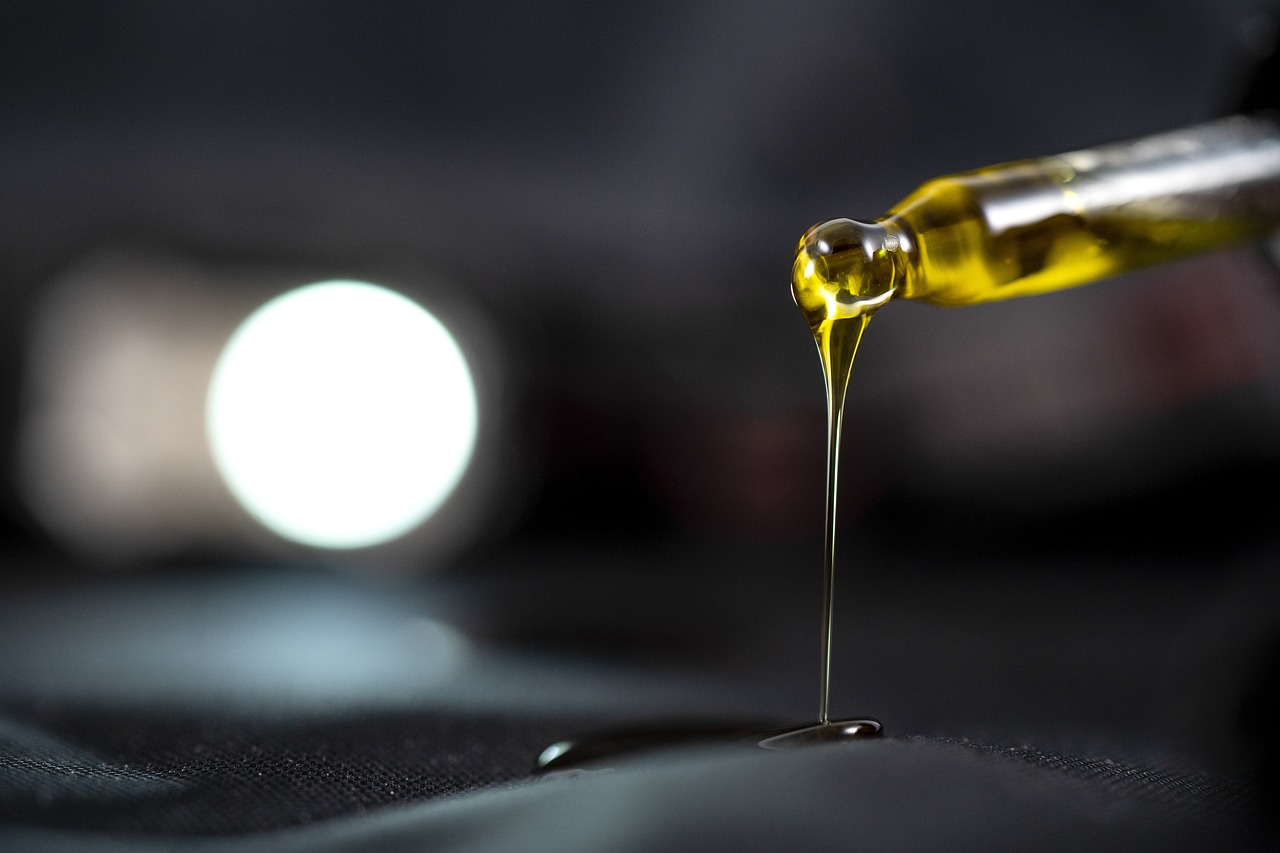
Impact on Marine Life
When an oil spill occurs, the immediate aftermath is nothing short of catastrophic for marine life. Picture the ocean, once vibrant and teeming with life, suddenly shrouded in a thick layer of toxic oil. This slick not only coats the surface but also seeps into the water column, affecting organisms at every level of the food chain. From the smallest plankton to the largest marine mammals, oil spills disrupt the delicate balance of marine ecosystems. One of the most alarming impacts is on the reproductive health of marine species. Studies have shown that exposure to oil can lead to decreased fertility and abnormal development in fish and other aquatic organisms. For instance, fish embryos exposed to oil often exhibit developmental malformations, which can spell disaster for future populations.
Furthermore, the loss of habitat is another critical concern. Oil spills can devastate essential habitats such as mangroves and estuaries, which serve as nurseries for numerous marine species. The destruction of these habitats not only impacts the organisms that rely on them for shelter and breeding but also disrupts the entire ecosystem. As these habitats degrade, the food web becomes increasingly fragile, leading to a decline in biodiversity. For example, the loss of seagrass beds due to oil contamination can have a domino effect, resulting in the decline of species that depend on these areas for survival.
In addition to reproductive issues and habitat loss, oil spills can also lead to acute toxicity in marine life. Many marine organisms, particularly filter feeders like clams and oysters, absorb oil directly from the water, which can accumulate in their tissues. This bioaccumulation poses serious risks not only to the organisms themselves but also to the predators that consume them. The table below illustrates some of the critical impacts of oil spills on various marine species:
| Marine Species | Impact of Oil Spills |
|---|---|
| Plankton | Reduced reproduction rates and increased mortality. |
| Fish | Developmental malformations and decreased fertility. |
| Marine Mammals | Disruption of feeding and breeding patterns. |
| Coral Reefs | Bleaching and increased susceptibility to disease. |
Moreover, the psychological effects on marine life cannot be ignored. The stress caused by oil exposure can lead to behavioral changes in fish and other marine animals, affecting their ability to forage, mate, and evade predators. Imagine a fish that used to thrive in its environment now struggling to survive due to the overwhelming presence of oil. It’s a grim reality that underscores the far-reaching consequences of oil spills.
In summary, the impact of oil spills on marine life is profound and multifaceted. From reproductive issues and habitat loss to toxic accumulation and behavioral changes, the ripple effects are felt throughout the entire marine ecosystem. As we continue to explore the depths of our oceans, it becomes increasingly clear that protecting these vital habitats is essential for the health of marine life and, ultimately, our planet.

Birds and Oil Contamination
Birds are among the most vulnerable creatures when it comes to oil spills. When oil coats their feathers, it disrupts the natural insulation and waterproofing that feathers provide. Imagine trying to swim in a pool of syrup; that’s what it feels like for birds trying to fly or stay warm after an oil spill. The immediate effect is a loss of buoyancy, which can lead to drowning, especially for species that rely on their ability to float on water to hunt or escape predators.
Moreover, the ingestion of oil occurs when birds preen their feathers in an attempt to clean them. This behavior is instinctual, but it can lead to severe internal damage. Oil contains toxic compounds that can cause liver and kidney failure, reproductive issues, and even death. The impact extends beyond individual birds; entire populations can be at risk, particularly for species that are already endangered. For example, seabirds such as the Common Murre and the Black-legged Kittiwake have been significantly affected by oil spills in the past.
When we consider the nesting habits of birds, the consequences of oil contamination become even more alarming. Many birds build their nests near shorelines or marshes, areas that are often the first to be affected by an oil spill. The oil can smother eggs and chicks, leading to decreased survival rates. In addition, the habitats that provide food and shelter are often destroyed or altered, making it difficult for birds to thrive. The long-term effects can lead to a decline in bird populations, which disrupts the entire ecosystem.
To illustrate the severity of the situation, consider the following table that outlines some of the key impacts of oil contamination on bird species:
| Bird Species | Impact of Oil Contamination | Conservation Status |
|---|---|---|
| Common Murre | Decreased survival rates due to feather contamination and habitat loss. | Near Threatened |
| American Oystercatcher | Eggs can be smothered by oil; food sources are contaminated. | Least Concern |
| Black-legged Kittiwake | Reproductive failure and reduced chick survival. | Near Threatened |
In conclusion, the impact of oil spills on birds is profound and multifaceted. From immediate physical harm to long-term ecological consequences, the effects ripple through the environment. Protecting avian populations requires not only immediate response efforts during an oil spill but also ongoing conservation strategies to restore their habitats and mitigate future risks. By understanding these challenges, we can better appreciate the importance of preserving these magnificent creatures and the ecosystems they inhabit.
- What should I do if I see an oil spill? - Report it to local authorities immediately. Quick response can minimize damage.
- How can oil spills be prevented? - Strict regulations, regular inspections, and using safer technologies are key to prevention.
- Are all birds affected equally by oil spills? - No, some species are more vulnerable due to their habitat, behaviors, and population status.
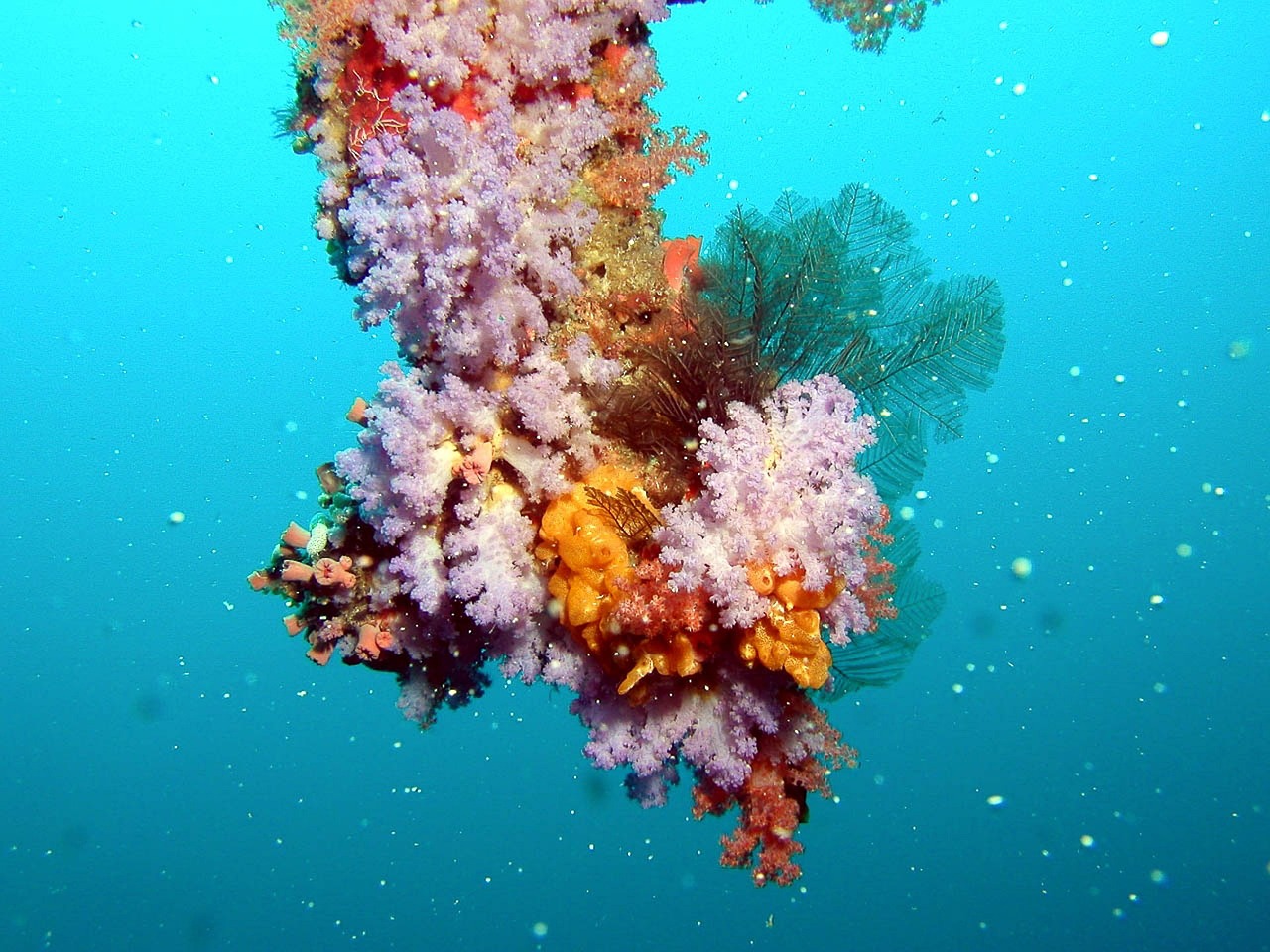
Coral Reefs and Oil Exposure
Coral reefs, often referred to as the "rainforests of the sea," are among the most biodiverse ecosystems on the planet. However, they are incredibly vulnerable to various environmental threats, with oil spills being one of the most devastating. When oil enters these delicate ecosystems, the consequences can be catastrophic, leading to a chain reaction of ecological disturbances. The immediate exposure to oil can cause coral bleaching, a process where corals lose their vibrant colors and the symbiotic algae that provide them with nutrients. Without these algae, corals struggle to survive, leading to widespread mortality.
The impact of oil on coral reefs doesn't stop at bleaching. Oil compounds can penetrate the coral's tissues, causing cellular damage and disrupting their reproductive processes. This means that not only are existing corals suffering, but the future generations are at risk as well. Interestingly, the effects of oil spills can vary depending on the type of oil and the specific environmental conditions at the time of the spill. For example, lighter oils may evaporate quickly, but they can still cause significant harm in the short term, while heavier oils tend to linger and create long-term contamination issues.
Moreover, the aftermath of an oil spill can lead to a decline in fish populations that rely on coral reefs for habitat and food. This decline can have a ripple effect throughout the entire marine food web. For instance, species that depend on healthy coral reefs for breeding and feeding may find themselves in dire situations, leading to a decrease in biodiversity. This is particularly concerning given that many coastal communities depend on these fish for their livelihoods.
To illustrate the severity of the situation, consider the following table that summarizes the impacts of oil exposure on coral reefs:
| Impact | Description |
|---|---|
| Coral Bleaching | Loss of color and nutrients due to the expulsion of symbiotic algae. |
| Cellular Damage | Direct harm to coral tissues, affecting overall health and reproduction. |
| Fish Population Decline | Reduction in species that rely on coral reefs, impacting local fisheries. |
| Long-term Recovery | Prolonged periods needed for reefs to recover, often leading to permanent changes. |
In conclusion, the exposure of coral reefs to oil is a pressing environmental issue that requires immediate attention. The intricate balance of marine ecosystems can be disrupted in mere moments, leading to consequences that may last for decades. Protecting these vital ecosystems is not just an environmental concern; it's a matter of preserving biodiversity and ensuring the health of our oceans for future generations. As stewards of the planet, we must advocate for preventive measures and swift responses to oil spills to safeguard these underwater treasures.
- What are coral reefs? Coral reefs are underwater structures made from calcium carbonate secreted by corals, serving as habitats for a diverse range of marine life.
- How do oil spills affect coral reefs? Oil spills can cause coral bleaching, cellular damage, and a decline in fish populations, disrupting the entire marine ecosystem.
- What can be done to protect coral reefs from oil spills? Implementing stricter regulations on oil drilling and transportation, alongside developing rapid response strategies for spills, can help protect these ecosystems.
- Are there long-term effects of oil spills on coral reefs? Yes, oil spills can lead to prolonged ecological damage, affecting coral health and the biodiversity of marine life for years to come.

Impact on Terrestrial Wildlife
Oil spills are not just a maritime issue; they ripple through terrestrial ecosystems, causing significant harm to wildlife that depends on both land and water. When oil seeps into the environment, it creates a toxic blanket that can smother vegetation, poison soil, and disrupt the delicate balance of life. Imagine a once-thriving forest or grassland suddenly coated in black sludge—this is the harsh reality for many habitats affected by oil spills.
The immediate aftermath of an oil spill can be catastrophic for terrestrial wildlife. Animals that rely on these ecosystems for food and shelter find themselves in peril. For example, mammals such as deer and raccoons may ingest contaminated vegetation or water, leading to severe health issues or even death. Birds that forage for insects or seeds on the ground may also fall victim to the toxic effects, impacting their ability to reproduce and thrive.
Furthermore, oil spills can disrupt the food chain. When primary producers like plants and phytoplankton are affected, it creates a domino effect that impacts herbivores and, subsequently, the predators that rely on them. Consider the following consequences:
- Habitat Degradation: Oil can destroy the physical structure of habitats, making them uninhabitable for many species.
- Food Scarcity: The loss of plants and insects leads to a decreased food supply for herbivores and their predators.
- Reproductive Challenges: Contaminated environments can lead to lower birth rates and higher mortality in young animals.
In addition to direct impacts, oil spills can also lead to long-term changes in animal behavior. Wildlife may avoid areas that have been contaminated, even after cleanup efforts. This avoidance can lead to a fragmentation of habitats, where animals are forced to migrate to less favorable areas, disrupting their natural patterns and increasing competition for resources.
Moreover, certain species are more vulnerable than others. For example, amphibians, which are already facing challenges from habitat loss and climate change, may struggle to survive in oil-affected areas due to their permeable skin, which readily absorbs toxins. The decline of such sensitive species can serve as an indicator of broader environmental health issues, signaling that entire ecosystems are under threat.
To summarize, the impact of oil spills on terrestrial wildlife is profound and multifaceted. From immediate health crises to long-term ecological shifts, the consequences are far-reaching. It’s crucial for us to recognize these impacts and advocate for stronger prevention measures and rapid response strategies to mitigate the damage caused by such disasters.
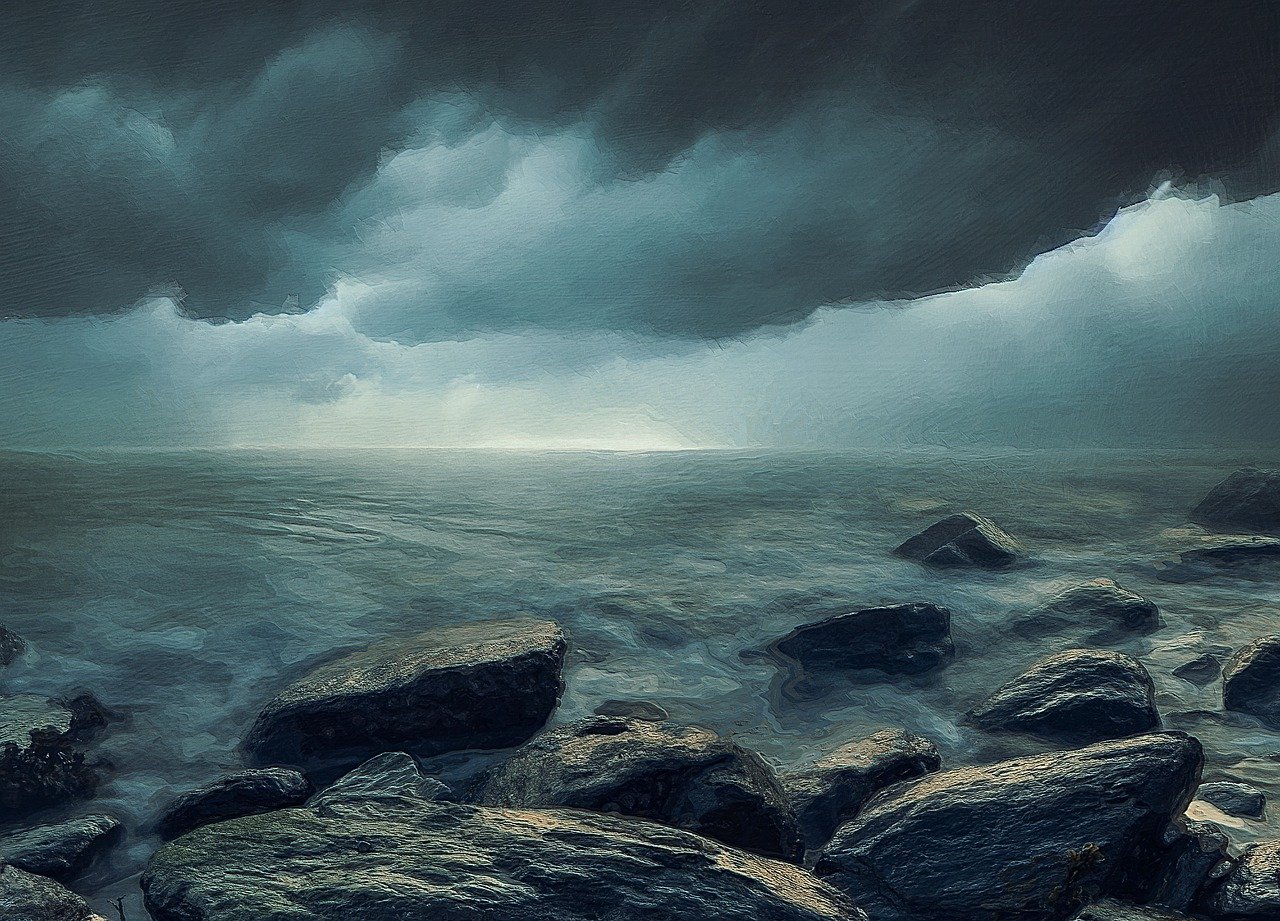
Human Health Risks
Oil spills are not just environmental disasters; they also pose significant risks to human health, particularly for communities living in proximity to affected areas. When oil contaminates water sources, air quality, and soil, the implications for public health can be dire. Exposure to toxic components of crude oil can lead to a myriad of health issues, including respiratory problems, skin irritations, and even long-term chronic conditions. Imagine living in a place where the air you breathe is tainted with harmful chemicals—it's a nightmare that many communities face after an oil spill.
The immediate effects of oil spills on human health can be alarming. People may experience symptoms such as:
- Respiratory issues: Inhalation of volatile organic compounds (VOCs) can lead to coughing, throat irritation, and difficulty breathing.
- Skin irritations: Direct contact with oil can cause rashes, burns, and other skin conditions.
- Gastrointestinal problems: Consumption of contaminated water or food can lead to nausea, vomiting, and diarrhea.
Moreover, the psychological toll of oil spills cannot be understated. The fear of health risks, combined with the loss of livelihoods and community disruption, can lead to significant mental health issues. People may suffer from anxiety, depression, and post-traumatic stress disorder (PTSD) as they grapple with the aftermath of such disasters. The social fabric of affected communities often frays, leading to increased isolation and a sense of helplessness.
To better understand the extent of these health risks, a table summarizing the potential health effects of oil spills might be helpful:
| Health Effect | Description |
|---|---|
| Respiratory Problems | Inhalation of VOCs can trigger asthma, bronchitis, and other respiratory conditions. |
| Skin Irritation | Contact with oil can lead to rashes, burns, and other dermatological issues. |
| Gastrointestinal Issues | Contaminated water or food can cause nausea, vomiting, and diarrhea. |
| Psychological Impact | Stress, anxiety, and depression can arise from the trauma of oil spills. |
In addition to direct health impacts, oil spills can disrupt local economies, leading to loss of jobs and income, which further exacerbates the stress on communities. The fishing and tourism industries, often the backbone of coastal economies, may suffer devastating losses, leaving families struggling to make ends meet. The ripple effects can last for generations, as communities work to recover and rebuild.
In conclusion, the health risks associated with oil spills are profound and multifaceted. From immediate physical ailments to long-term psychological effects, the consequences can be devastating for individuals and communities alike. It's crucial for governments and organizations to prioritize effective response strategies, not only to mitigate environmental damage but also to protect the health and well-being of affected populations.
- What are the long-term health effects of oil spills? Long-term exposure can lead to chronic respiratory issues, skin conditions, and mental health problems.
- How can communities prepare for potential oil spills? Communities should have emergency response plans, including evacuation routes and access to medical care.
- What support is available for affected communities? Various organizations provide health monitoring, psychological support, and economic assistance following oil spills.
- Are there regulations to prevent oil spills? Yes, there are various regulations in place aimed at preventing oil spills and ensuring companies are held accountable.
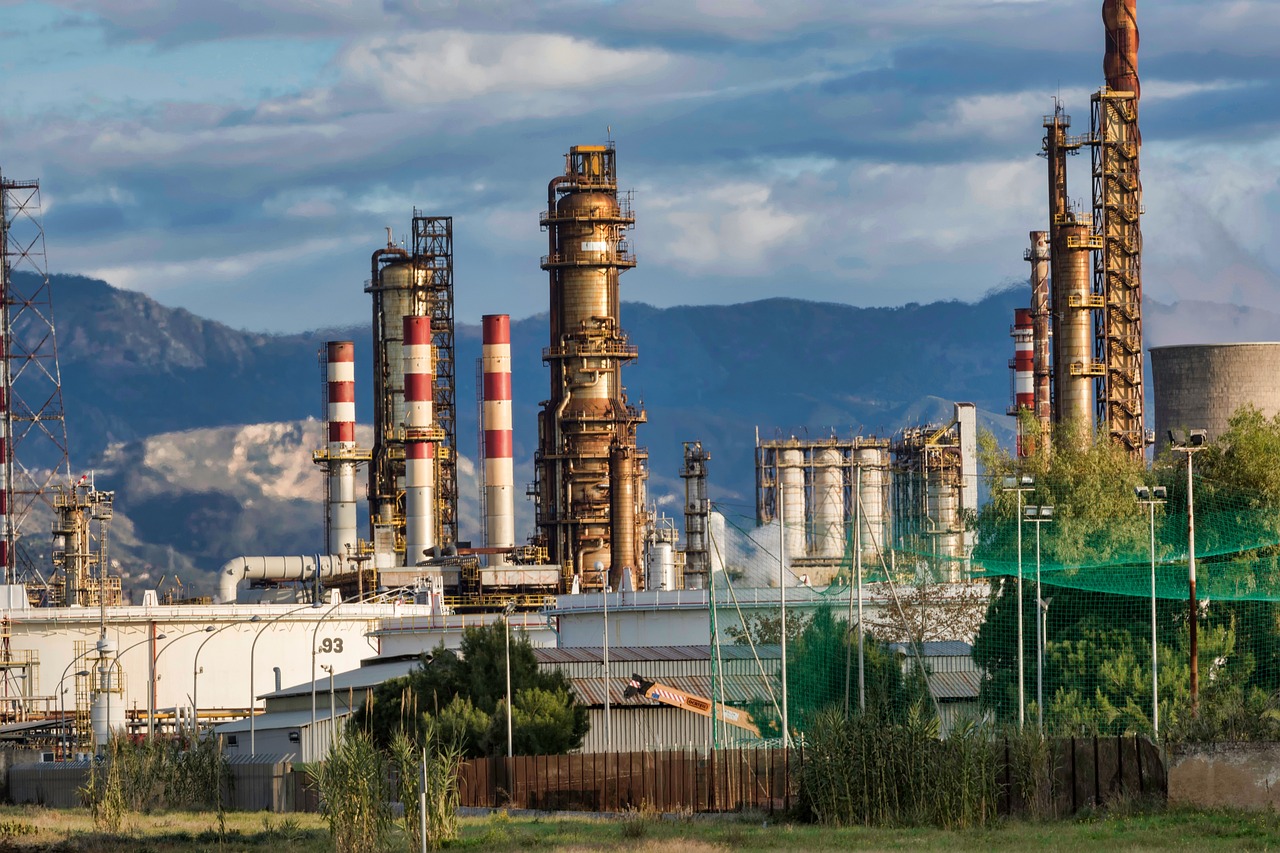
Psychosocial Effects on Communities
When an oil spill occurs, the immediate aftermath can be devastating, not just ecologically but also on a deeply personal level for the communities affected. Imagine waking up to the smell of oil in the air, knowing that your livelihood and the natural beauty surrounding you have been compromised. The psychosocial effects of such disasters can ripple through communities, creating a pervasive sense of anxiety, fear, and helplessness.
One of the most significant impacts is the emotional distress experienced by residents. People often report feeling overwhelmed by the uncertainty of their future. Will they be able to return to their jobs? Will their children be safe? This uncertainty can lead to increased levels of stress, anxiety, and depression. In many cases, individuals may find themselves grappling with a sense of loss—not just of their jobs, but of their community's identity and heritage.
Moreover, the social fabric of a community can become strained. As people cope with the aftermath of an oil spill, social interactions may decline. Friends and neighbors might withdraw from one another, leading to feelings of isolation. The sense of community that once existed can be replaced by suspicion and blame, as residents seek to understand who is responsible for the disaster. Trust in local authorities and organizations can erode, leading to a breakdown in community cohesion.
Additionally, the long-term psychological effects can manifest as chronic stress, which has been linked to various health issues. The worry about potential health risks from exposure to oil and the fear of future spills can create a constant state of alertness. This chronic stress can lead to physical health problems, including cardiovascular issues and weakened immune responses.
In summary, the psychosocial effects of oil spills extend far beyond the immediate environmental damage. They touch on the very core of what it means to belong to a community. Addressing these effects is crucial for recovery. Initiatives that promote mental health support, community engagement, and open communication can play a significant role in helping communities heal. It’s essential for affected populations to have access to resources that can aid in their recovery journey, both emotionally and socially.
To better understand the psychosocial impacts, here’s a brief overview of the key effects:
| Psychosocial Effect | Description |
|---|---|
| Emotional Distress | Feelings of anxiety, fear, and depression due to uncertainty and loss. |
| Social Isolation | Withdrawal from social interactions leading to feelings of loneliness. |
| Trust Erosion | Decreased trust in authorities and organizations responsible for community welfare. |
| Chronic Stress | Long-term stress leading to potential physical health problems. |
Ultimately, the recovery process following an oil spill is not just about cleaning up the environment; it’s also about restoring hope and rebuilding the community. By focusing on mental health and social cohesion, affected communities can work towards a more resilient future.
- What are the immediate psychological effects of an oil spill?
People often experience anxiety, fear, and emotional distress due to uncertainty about their futures. - How can communities support each other after an oil spill?
Communities can promote mental health resources, engage in open dialogues, and organize support groups to help individuals cope. - What role do local authorities play in recovery?
Local authorities must ensure transparent communication and provide necessary resources to help communities heal.

Economic Consequences
Oil spills are not just environmental disasters; they are also severe economic crises that can cripple local communities and industries. The impact is often immediate and devastating, affecting various sectors, particularly fishing and tourism, which are vital sources of income for many coastal regions. Imagine waking up one day to find the waters you rely on for your livelihood tainted with oil—this is the harsh reality for countless fishermen and their families. The ripple effects of such an event can lead to long-term economic instability.
When oil spills occur, the fishing industry is usually one of the first to suffer. Contaminated waters mean contaminated fish, leading to a decline in fish populations and a loss of consumer trust. Fishermen may find themselves unable to sell their catch, leading to significant income loss. According to recent studies, the economic impact on the fishing industry can reach millions of dollars within the first few months following a spill. For example, after the Deepwater Horizon spill in 2010, estimates suggested that the fishing industry in the Gulf of Mexico lost over $1 billion in revenue.
Tourism, another crucial sector, also takes a hit. Tourists flock to coastal areas for their natural beauty and recreational opportunities. When an oil spill occurs, beaches become polluted, and marine life is endangered, discouraging visitors. The decline in tourism can lead to business closures, job losses, and a significant drop in local tax revenues. A study conducted after the Exxon Valdez spill showed that tourism in affected areas dropped by as much as 50% in the years following the disaster. This decline not only affects hotels and restaurants but also local shops and service providers who depend on tourist traffic.
Beyond immediate losses, the long-term consequences of oil spills can be just as damaging. Communities may face prolonged economic hardship as they struggle to recover. The costs associated with cleanup efforts, legal battles, and health monitoring can drain local resources. Moreover, the psychological toll on affected populations can lead to decreased productivity and increased healthcare costs, further straining local economies.
To illustrate the economic toll more clearly, consider the following table that summarizes the potential impacts of oil spills on various sectors:
| Sector | Immediate Impact | Long-term Consequences |
|---|---|---|
| Fishing | Loss of catch; contaminated waters | Decline in fish populations; loss of consumer trust |
| Tourism | Beach closures; reduced visitor numbers | Business closures; long-term decline in local economy |
| Real Estate | Decrease in property values | Long-term decline in investment |
| Healthcare | Increased health monitoring costs | Long-term health issues; increased healthcare spending |
In summary, the economic consequences of oil spills extend far beyond the initial disaster. They create a domino effect that can cripple entire communities, disrupt livelihoods, and lead to long-lasting damage to local economies. It's crucial for governments and organizations to prioritize prevention and develop effective response strategies to mitigate these impacts. After all, protecting our environment is not just about saving wildlife; it's also about safeguarding the economic future of communities that depend on these ecosystems.
- What are the primary economic impacts of oil spills? Oil spills primarily affect the fishing and tourism industries, leading to immediate income loss and long-term economic instability.
- How long do the economic effects of an oil spill last? The economic effects can last for years, with some industries taking a decade or more to fully recover.
- What measures can be taken to prevent oil spills? Implementing stricter regulations, investing in better technology, and conducting regular safety inspections can help prevent oil spills.
- How do oil spills affect real estate values? Oil spills can lead to a decrease in property values, particularly in coastal areas, due to concerns about environmental damage and reduced tourism.
Frequently Asked Questions
- What are the immediate ecological impacts of oil spills?
Oil spills cause severe damage to both marine and terrestrial ecosystems right from the get-go. The oil coats plants and animals, disrupting their natural behaviors and habitats. Marine life, from tiny plankton to large mammals, faces immediate threats, leading to drastic declines in populations. Terrestrial animals also suffer as their food sources become contaminated, creating a ripple effect throughout the ecosystem.
- How do oil spills affect marine life in the long term?
While the initial impact is devastating, the long-term effects can be even more troubling. Ecosystems may struggle for years, if not decades, to bounce back. Marine organisms often face reproductive issues, habitat loss, and increased vulnerability to diseases. Over time, the balance of marine life can shift dramatically, leading to a decline in biodiversity and the disruption of food chains.
- What specific threats do oil spills pose to birds?
Birds are particularly susceptible to the dangers of oil spills. When they come into contact with oil, it can impair their ability to fly, find food, and maintain their body temperature. This not only affects individual birds but can also lead to population declines, especially in species already at risk. The loss of nesting sites due to habitat degradation further compounds these challenges.
- How do oil spills impact coral reefs?
Coral reefs are incredibly sensitive to oil exposure. Oil can lead to coral bleaching, where the coral loses its color and essential algae, resulting in high mortality rates. This not only affects the coral itself but also the myriad of marine species that rely on reefs for habitat and food. The long-term health of these ecosystems is jeopardized, affecting the biodiversity they support.
- What are the human health risks associated with oil spills?
People living near oil spill sites face significant health risks. Exposure to oil and its toxic components can lead to respiratory issues, skin irritations, and other serious health problems. Moreover, the stress and anxiety that come from living in a contaminated area can take a toll on mental health, making it crucial for communities to receive proper support and monitoring.
- What psychosocial effects do oil spills have on communities?
The aftermath of an oil spill can lead to profound psychological stress for affected communities. Feelings of helplessness, anxiety, and grief can permeate these populations, disrupting social structures and leading to long-term emotional challenges. The loss of livelihoods, particularly in fishing and tourism, can exacerbate these issues, creating a cycle of despair.
- What economic consequences do oil spills have?
Oil spills can wreak havoc on local economies, particularly those reliant on fishing and tourism. The contamination of water and beaches leads to a decline in fish populations and deters tourists, resulting in significant financial losses. Recovery can be a long and arduous process, often requiring extensive cleanup efforts and economic support from outside sources.



















